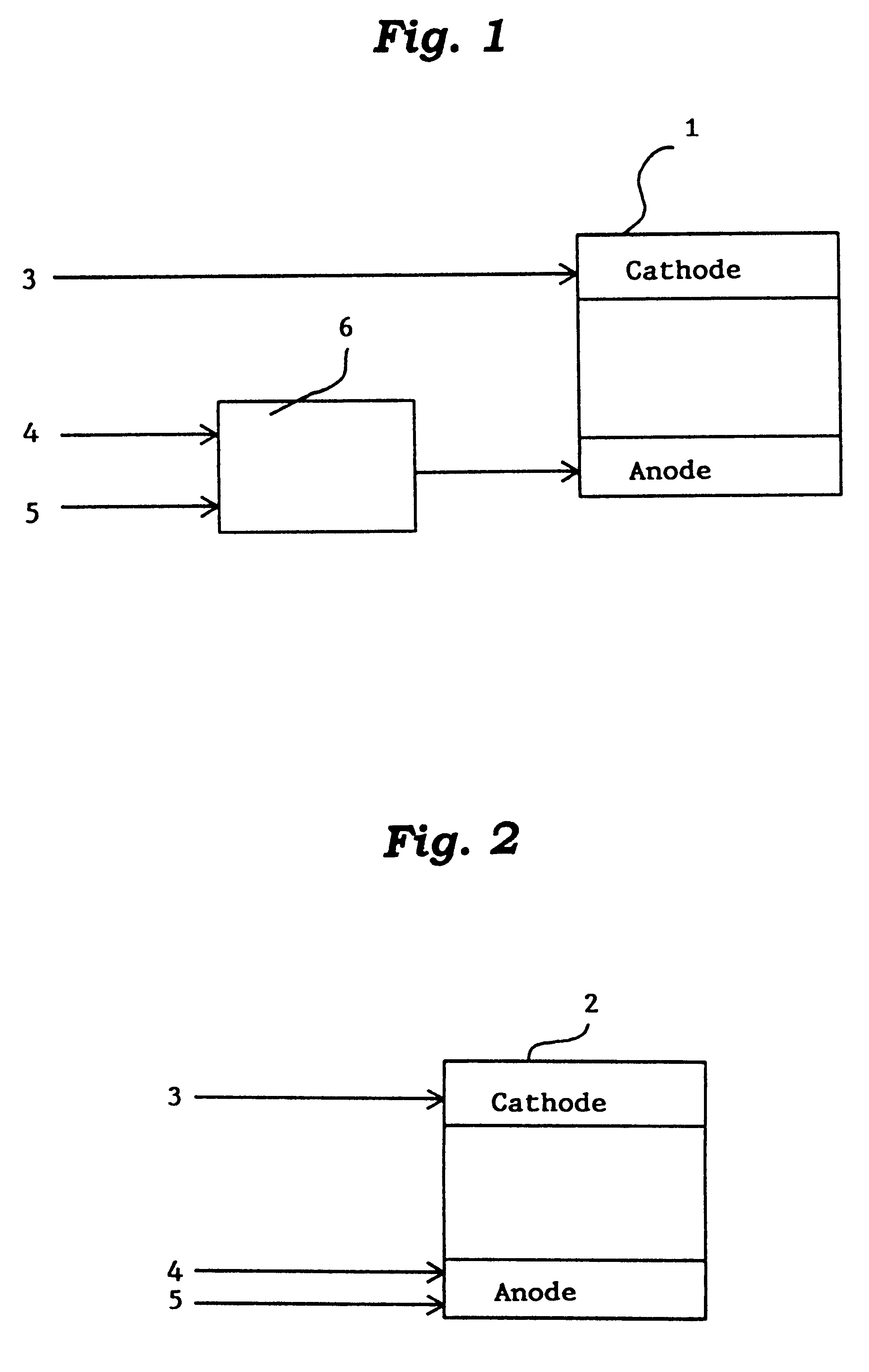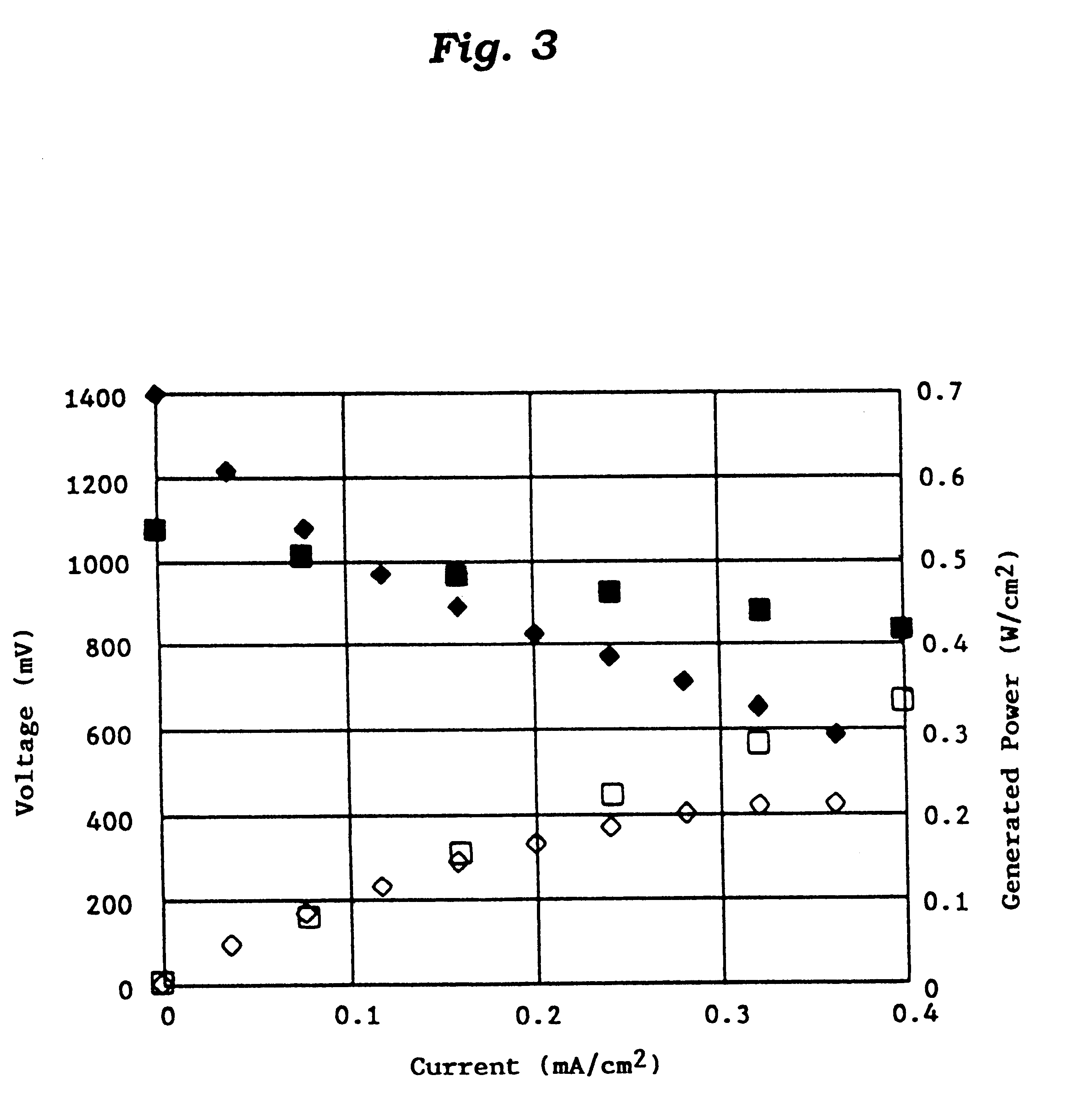Catalyst for manufacturing hydrogen or synthesis gas and manufacturing method of hydrogen or synthesis gas
a technology of hydrogen or synthesis gas and catalyst, which is applied in the direction of metal/metal-oxide/metal-hydroxide catalyst, energy input, chemical production, etc., can solve the problems of catalyst deterioration, complex and expensive coal gasification oven, etc., and achieve the effect of hydrogen production
- Summary
- Abstract
- Description
- Claims
- Application Information
AI Technical Summary
Benefits of technology
Problems solved by technology
Method used
Image
Examples
examples 1-4
An aqueous solution of 91 g cupric nitrate (Cu(NO.sub.3).sub.2.3H.sub.2 O), 73 g zinc nitrate (Zn(NO.sub.3).sub.2.6H.sub.2 O) and 368 g aluminum nitrate (Al(NO.sub.3).sub.3.9H.sub.2 O) dissolved in about 2 l demineralized water and an aqueous solution of about 250 g sodium carbonate (Na.sub.2 CO.sub.3) dissolved in about 2 l demineralized water were introduced dropwise into a stainless steel container containing about 5 l deminerailized water kept at about 80.degree. C. for about 2 hours, while adjusting the pH to 8.0.+-.0.5. After the introduction, maturing was carried out for about 1 hour with leaving as it is. While, the pH was adjusted to 8.0.+-.0.5 by adding dropwise about 1 mol / l nitric acid aqueous solution or about 1 mol / l sodium carbonate aqueous solution. Subsequently, produced precipitates were filtered, and washed with demineralized water until nitrate ion was not detected in the washed solution. The cake thus obtained was dried at 120.degree. C. for 24 hours, and sinter...
example 5-8
A catalyst was prepared according to the same method as Examples 1-4, except that 105 g chromium nitrate (Cr(NO.sub.3).sub.2.3H.sub.2 O) was used instead of zinc nitrate.
The composition of the obtained catalyst was CuO:Cr.sub.2 O.sub.3 :Al.sub.2 O.sub.3 =30:20:50 (weight ratio).
Reaction Method
A prescribed amount of the above catalyst was packed in a stainless steel reaction tube having an inside diameter of 20 mm. A prescribed amount of dimethyl ether and carbon dioxide were supplied to the reaction tube, and the reaction was carried out at a prescribed temperature.
The reaction products and unreacted materials obtained by the above operations were analyzed by gas chromatography.
Reaction Conditions and Experimental Results
The reaction conditions and experimental results are shown in Tables 2 and 3. ##EQU1##
n: number of carbon atoms
All units of each rate are [mol / g-cat.multidot.h]
TABLE 2
examples 9-11
An aqueous solution of 91 g cupric nitrate (Cu(NO.sub.3).sub.2. 3H.sub.2 O), 39 g nickel nitrate (Ni(NO.sub.3).sub.2.multidot.6H.sub.2 O), 37 g zinc nitrate (Zn(NO.sub.3).sub.2.6H.sub.2 O) and 368 g aluminum nitrate (Al(NO.sub.3).sub.3.9H.sub.2 O) dissolved in about 2 l demineralized water and an aqueous solution of about 200 g sodium hydroxide dissolved in about 2 l demineralized water were introduced dropwise into a stainless steel container containing about 5 l demineralized water kept at about 60.degree. C. for about 1 hours, while adjusting the pH to 8.0.+-.0.5. After the introduction, maturing was carried out for about 1 hour with leaving as it is. The pH was adjusted to 8.0.+-.0.5 by adding dropwise about 1 mol / l nitric acid aqueous solution or about 1 mol / l sodium hydroxide aqueous solution. Subsequently, the produced precipitates were filtered, and washed with demineralized water until nitrate ion was not detected in the washed solution. The cake thus obtained was dried at ...
PUM
| Property | Measurement | Unit |
|---|---|---|
| temperature | aaaaa | aaaaa |
| temperature | aaaaa | aaaaa |
| temperature | aaaaa | aaaaa |
Abstract
Description
Claims
Application Information
 Login to View More
Login to View More - R&D
- Intellectual Property
- Life Sciences
- Materials
- Tech Scout
- Unparalleled Data Quality
- Higher Quality Content
- 60% Fewer Hallucinations
Browse by: Latest US Patents, China's latest patents, Technical Efficacy Thesaurus, Application Domain, Technology Topic, Popular Technical Reports.
© 2025 PatSnap. All rights reserved.Legal|Privacy policy|Modern Slavery Act Transparency Statement|Sitemap|About US| Contact US: help@patsnap.com



